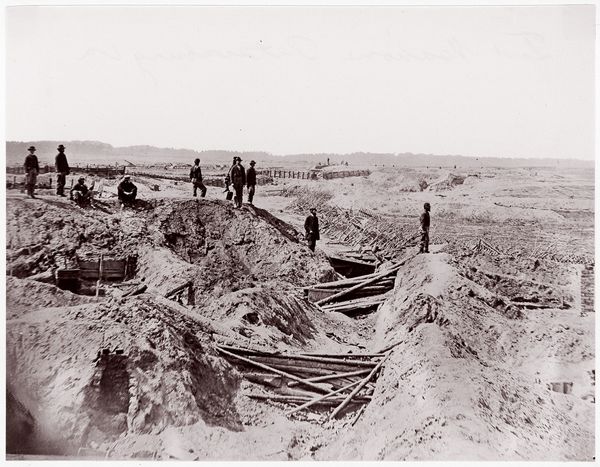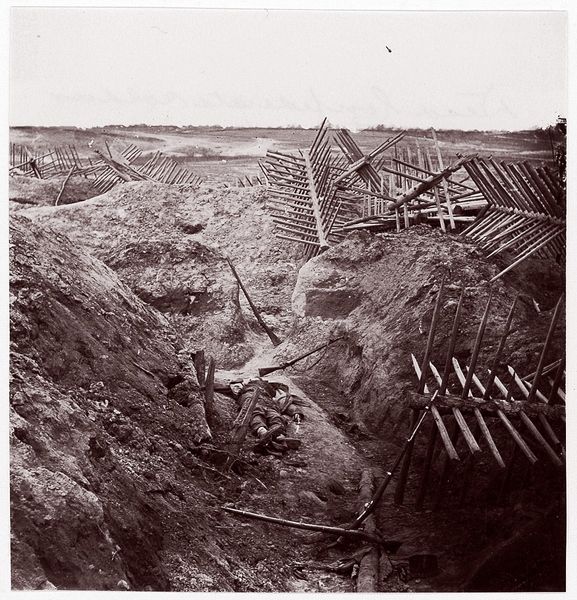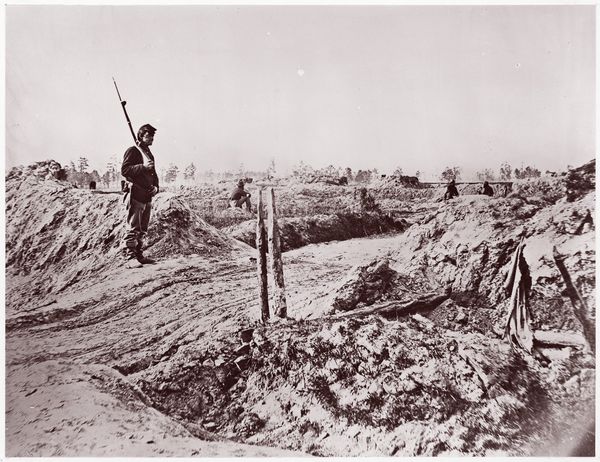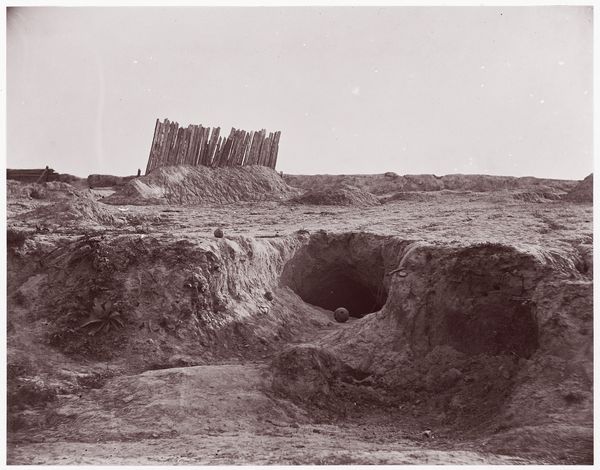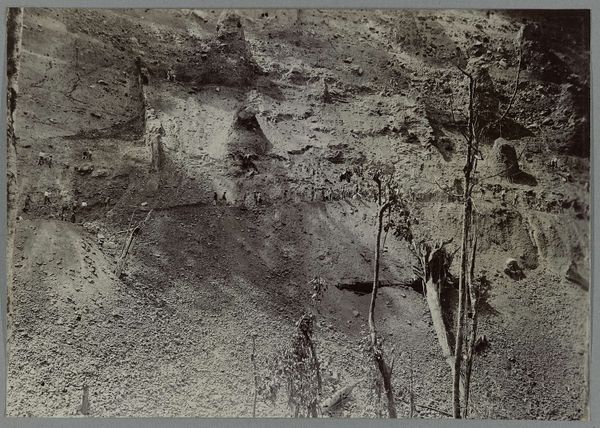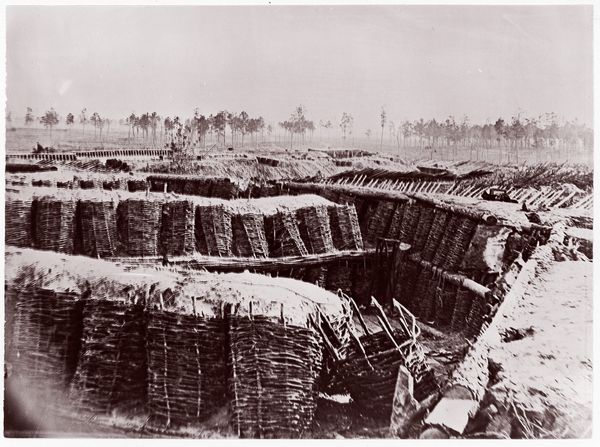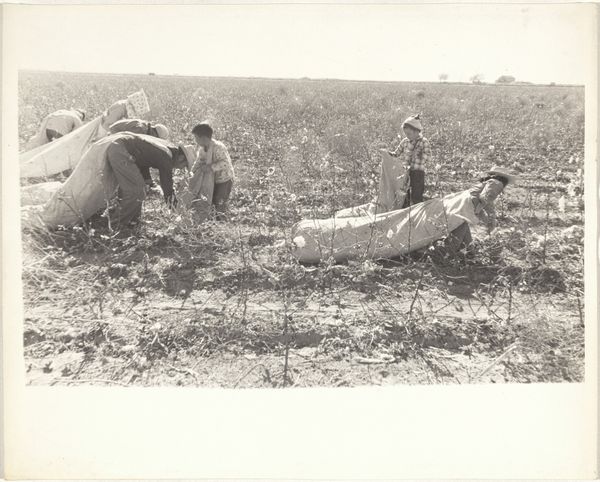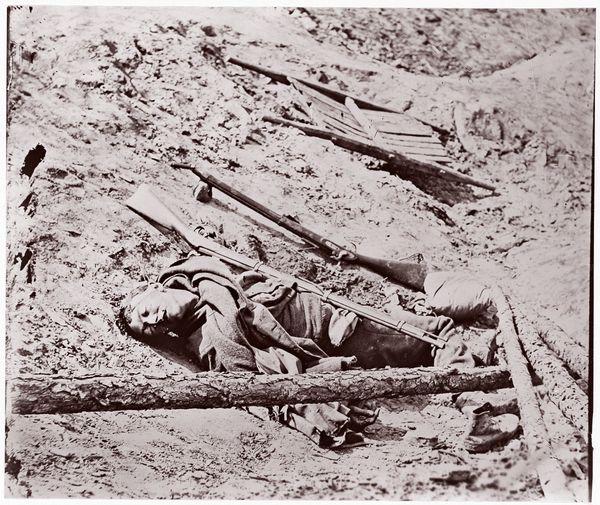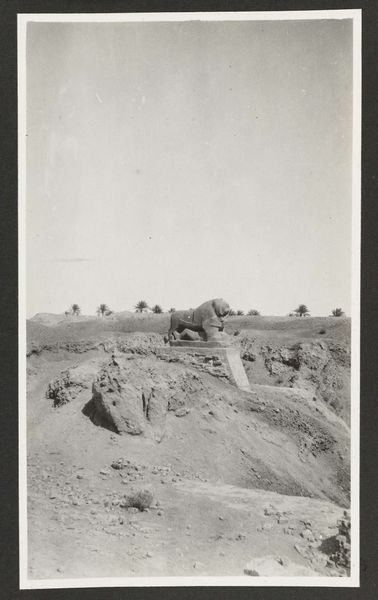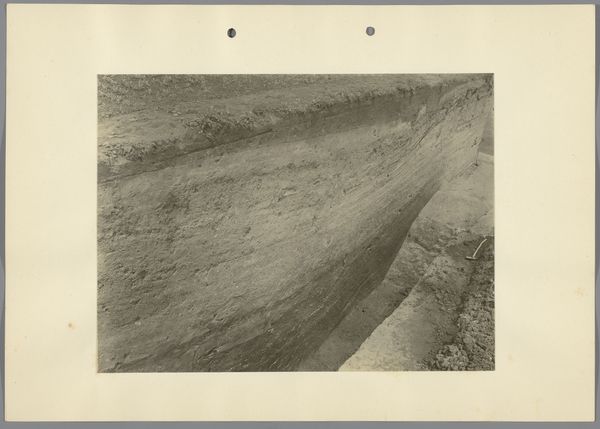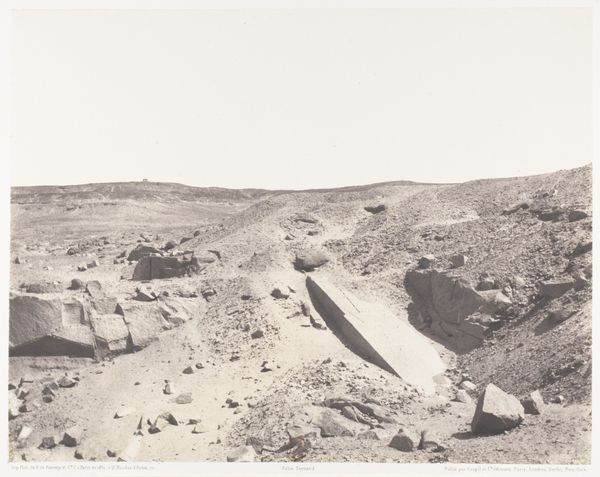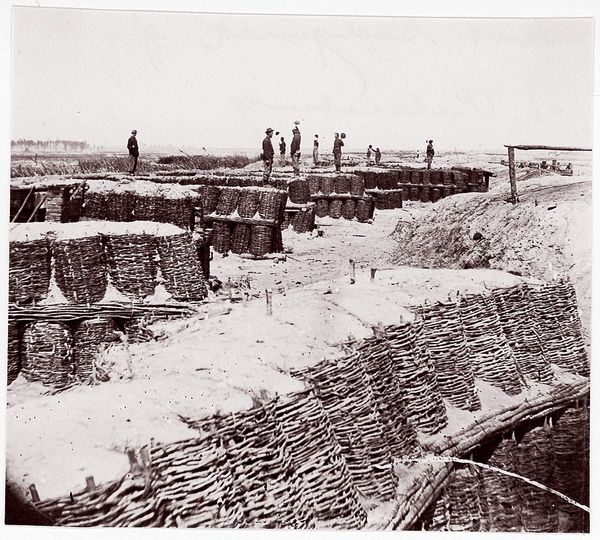
photography, gelatin-silver-print
#
photorealism
#
narrative-art
#
natural photography
#
death
#
war
#
nature photography
#
landscape
#
photography
#
gelatin-silver-print
#
monochrome photography
#
history-painting
#
realism
#
monochrome
Copyright: Public Domain
Curator: What a stark image. This is "Dead Confederates, Fort Mahone," a gelatin-silver print taken by Thomas C. Roche in 1864. The picture shows the brutal reality of the American Civil War. Editor: My immediate reaction is one of chilling desolation. The low contrast in this monochrome image and muddy landscape certainly amplify that sense of profound loss. Curator: Absolutely. Notice how Roche has structured the photograph. The diagonal line of the trench creates a division, almost severing the image and visually mirroring the division within the nation. Editor: I see that division, but for me, it’s not just about national conflict. Consider the individual soldier, seemingly discarded in this landscape. His body, lying in what appears to be stagnant water, raises questions about the glorification of war versus its dehumanizing effects, especially relevant to a nation grappling with issues of race and enslavement at the time. Curator: That's a compelling reading. Yet, also consider how Roche has used the tonal range here. The muddy foreground bleeds into the grey sky, collapsing pictorial space and directing our gaze directly towards the human figure, isolated by death, rendered as mere form. Editor: Right, but doesn’t the very act of photographing this fallen Confederate soldier also involve a negotiation of power? The photographer, a Northerner, captures the defeated enemy, turning a moment of tragedy into a visual record, influencing collective memory. It’s not just a document; it’s a statement about who gets to write the narratives of war, and for what purpose. Curator: I acknowledge your point, and in its own right, it makes it quite impossible to detach oneself from these contextual frameworks. I maintain, nonetheless, that an analysis of form directs us beyond purely biographical or social narratives; the contrast creates dramatic focus, guiding the viewers eye. Editor: I think both are intrinsically linked. We see an evocative image, made with purpose and resonating far beyond its aesthetic qualities alone. Curator: Indeed, the impact of images like this reverberates through time, regardless of its individual merits.
Comments
No comments
Be the first to comment and join the conversation on the ultimate creative platform.
